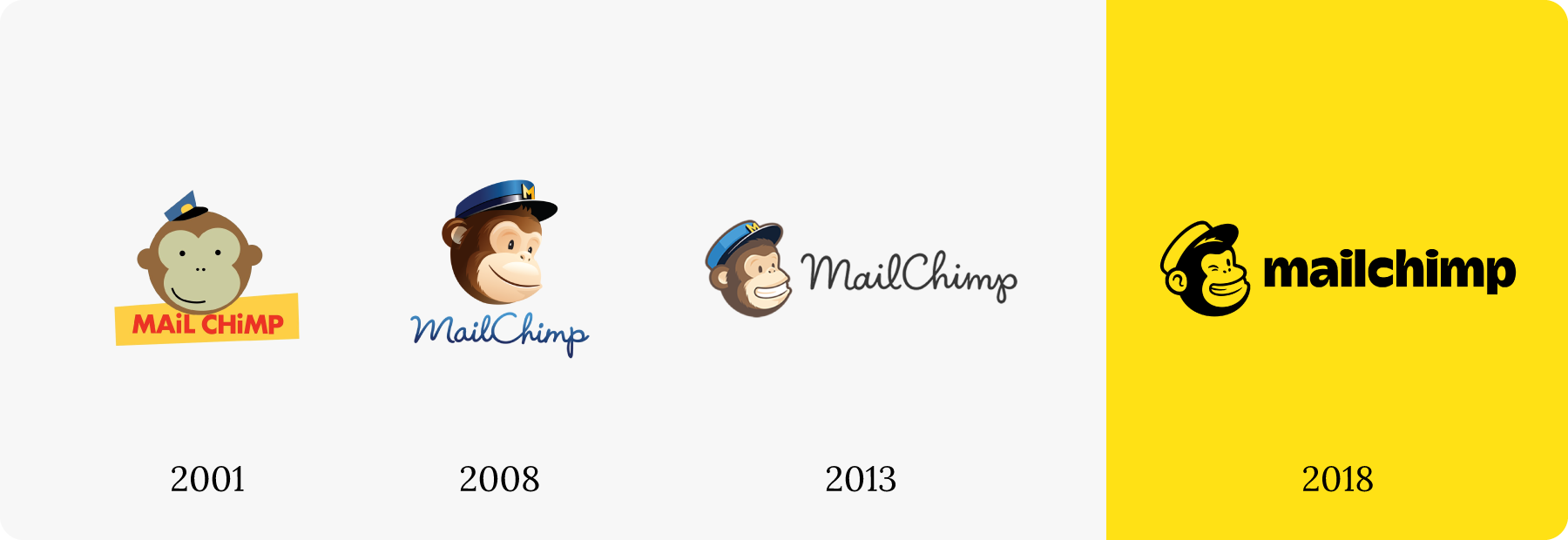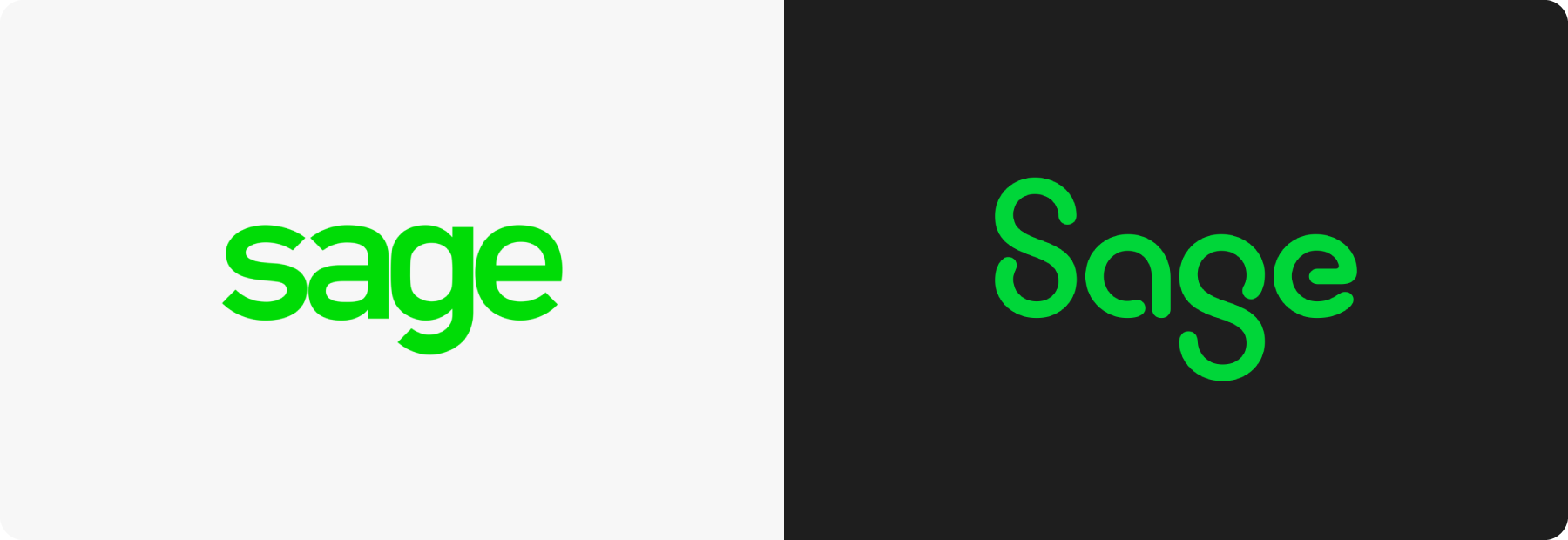The Art of a Rebrand

Rebranding isn’t just a new lick of paint – it’s a big, strategic move. Whether it’s a subtle tweak that only the keenest of eyes identify or a full-blown overhaul that takes LinkedIn by storm (shoutout to Jaguar), a rebrand needs careful thought, a solid understanding of the brand’s core, and a clear link to your business goals.
At KJC Creative, we help guide businesses through this process, ensuring brands retain their essence whilst amplifying their strongest attributes.
Brand evolution vs brand revolution
One of the biggest decisions to make when it comes to rebranding is how much of a transformation is actually needed. Sometimes simply modernising and refining what’s already there will give a brand enough of a boost, or if something more extreme is needed, then starting from scratch with a completely new identity may generate the level of impact desired.
Brand evolution offers a more gradual approach. Whilst keeping the brand foundations recognisable, look to incorporate subtle modifications such as adjusting typography, freshening up a colour palette, or fine-tuning a logo. This is ideal for established brands with significant brand equity that just need a contemporary update. A great example of this is Mailchimp’s 2018 rebrand, which evolved its identity by embracing a bolder, more playful visual approach while still maintaining its signature yellow shade and chimp mascot – successfully balancing modernisation with brand recognition.

A brand revolution provides a much bigger shift for those needing a transformative overhaul. Ideal for a company experiencing a merger, new ownership, attracting new audiences or to break away from outdated perceptions, this direction offers a new chapter in a brand’s identity. The 2022 rebrand of Sage is a perfect example for how this can be done effectively. Offering a bold refresh, the new identity repositioned the company as a modern, human-centred software provider whilst streamlining its identity to appeal to a global B2B audience.

Why rebrand? The key triggers
Rebrands shouldn’t just happen on a whim – there should be solid, strategic reasoning for implementing one. A well-planned rebrand aligns with established business goals, customer needs, and industry trends, ensuring a company’s long-term success.
By taking the time to research and strategise, businesses can make sure their new identity strengthens their position rather than compromising it. On the other hand, rushed or impulsive rebranding can lead to confusion and audience alienation, ultimately undermining the company’s image and growth. When done right, a rebrand can be a powerful tool for future-proofing a business, reinforcing its relevance, and building stronger connections with a growing customer base.
Some of the key triggers for rebranding are:
- Staying relevant: if a brand feels outdated or no longer resonates with its audience, a refresh can bring it back to life and attract new followers
- Mergers and acquisitions: when two companies join forces, a new identity can help align the brands and enhance their target market’s understanding of who they now are as a collective
- Changing business goals: if a company’s products or services have evolved, its branding should also reflect that. This is especially important for businesses expanding into new markets
- Reputation management: sometimes, a rebrand is the best way to shake off the weight of any negative perceptions and to start a fresh
The process: how we approach a rebrand
At KJC Creative, we follow a proven process to make sure a rebrand isn’t just visually appealing but also strategically sound for our clients. Each of the five stages plays a critical role in shaping the final outcome for you– as skipping or rushing through any of these steps can lead to missed opportunities, potentially increasing the need to revisit the branding again sooner than you’d like. Leeds United’s failed rebrand is a great example of how badly things can go when the opinions of a brand’s audience are not properly considered – in this instance triggering huge backlash, including over 70,000 petition signatures collected within 24 hours to stop the rebrand from happening.

1. Research and discovery
We initially start by digging into your brand’s history, audience, competitors and market positioning. This crucial phase involves interviewing stakeholders, conducting brand audits and gathering customer insights as well as growing our understanding of the relevant industry and its key players. This then enables us to gauge what brand equity is at our disposal and how this can be shaped to inform the next stages of the project.
2. Strategy and positioning
Before we even think about design, we need to define what your company stands for. A strong brand strategy sets out a clear mission, vision, values and any key differentiators to ensure the brand is built on a solid foundation. During this stage, we question, listen and learn to understand the essence of who you are. This then enables us to identify any areas of the brand that can be retained or potentially reconsidered. This in-depth examination enables an aligned strategy that will resonate with both your team and target audience, guaranteeing longevity and safeguarding for future growth.
3. Concept development
With a clear strategy in place, we then review or work with the client to form the creative brief to consider how the previous stages will influence the brand direction. From here we ignite our imaginations and start exploring visual concepts that we feel confident will align with your brand’s definition. At this stage we develop logo routes, explore typography choices, colour palettes, photography, graphical application and overall tone of voice. These culminate in creative routes where we push and challenge the brief, often resulting in us creating unique solutions that elevate the branding beyond your expectations.
4. Testing and refinement
A rebrand isn’t just about looking good, it’s about making a real, lasting impact. By using a company’s internal team and, where viable, target audiences to test the creative on, we can then immediately address on any concerns that could affect the lasting success of the branding. Then once these updates are considered and actioned, we can confidently commit to rolling out the creative.
Engaging with your employees in the rebranding process will also make it easier for them to understand and champion the identity moving forwards. So, consider how best to do this by either engaging a select few to form a test committee or requesting mass feedback through the use of polls to measure the general consensus.
5. Launch and implementation
Bringing a new brand to life takes careful planning. Therefore, having a clear idea of all of the potential touchpoints is essential in ensuring your branding is applied consistency throughout as well as establishing a roll out timeline. Do you have an event happening or a seasonal launch which will dictate your launch plan? If so, identifying the priorities and agreeing the order in which all platforms and documents will be worked though, will enable our designers to apply the new branding effectively and efficiently. Additionally, ensuring your employees properly understand the rebrand and are given any necessary communication and training on interacting with any branded assets, will ensure you have a successful launch from the outset.
6. Post-launch
After your new identity is public, it is a good idea to set clear review dates to analyse the initial and ongoing success of the branding. How this success is measured is down to each individual company, however ensuring it aligns with your overall business goals and any specific brand development objectives is key. So, whether you do this at 3, 6 or 12 months after launch, ensuring you are always revisiting the branding and how it resonates with your audience and your overall business strategy will enable you to stay relevant and agile.
It is also worth remembering that even the most perfectly executed rebrands require continuous care and attention – things can and should evolve over time, and it pays to keep on top of your brand and implement changes when issues or potential improvements are needed. We recommend appointing a brand guardian such as a creative agency or an internal team who can take the responsibility of looking after the brand, guaranteeing consistency and highlighting any issues when they arise.
The takeaway: rebranding as an opportunity
A rebrand is an opportunity to refine, reposition and reconnect with audiences in a meaningful way. Whether it’s an evolution or a revolution, the key to success is strategy, authenticity and consistency, and KJC can help guide you through each step of the process.
We believe a great rebrand isn’t just about looking different – it’s about standing for something bolder and better, built upon decisions that make sense for your brand. If your brand is at a crossroads, let’s talk about how we can work together to shape its next chapter.